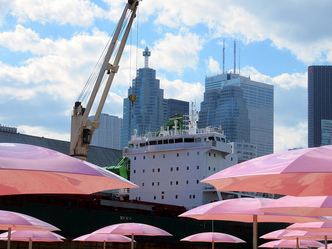 "Toronto Sugar Beach Skyline" image by Loozrboy
A Writing Tip from the 2012 Waterfront Festival in Toronto
This writing tip is not a big surprise to anyone who uses Search Engine Optimization techniques.
My article has a few very generic words that people might seek, such as "festival" and "waterfront".
I'd hate to guess how many waterfront festivals are held around the world. I do hope to log all, or most, of the annual festivals held in Toronto; but even that number will be quite large.
To have a hope of finding readers who care, I used "long tail" keywords throughout my article. Specifically, I added "in Toronto" at the end, or "Toronto" at the start.
By making the story local, I'm making it easy for search engines to recommend my article to people who look for "(something) in Toronto". I won't show up for those looking for events in Montreal, London or Paris; but that's fine by me.
Long tail keyword usage was one factor in my mind while writing about the 2012 Redpath Waterfront Festival in Toronto.
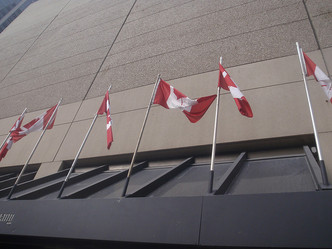 "Urban Canadian Flags at HBC" by PinkMoose (Anthony Easton) July 1st is Canada Day, the national holiday for the Great White North. My article notes a variety of special events on or around that date. In 2012, it's a Sunday, but it does take a long weekend to celebrate properly. I will always give a nod to events staged by the government, such as the civic music and bands at Mel Lastman Square or the remarkably under-publicized "fun and free activities" at Queen's Park.History buffs might pay regular admission to experience "Dominion Day" at Black Creek Pioneer Village.Perhaps the biggest and most exuberant party will be the Pride Parade on Sunday.My article has convenient links to those events and the others that are not mentioned here. I also promote my article in my Xanga blog (" 2012 Canada Day Events in Toronto" ).
Writing Tips based on Canada Day 2012 in Toronto
This writing tip is pretty obvious.
If you need a niche, build a portfolio of articles about annual local events.
Be sure to take a unique approach. One sure-fire winner is to adapt a "review" style, much as one would review a restaurant or movie. Your first-person account, illustrated with your own photographs, will be indisputably personalized.
My approach is to give people options for planning to attend special events, rather than reviewing them afterwards. In my view, that makes it difficult to write with the same authority; even if I had been there the previous year.
That's the approach I've taken in writing about upcoming Canada Day events in Toronto for July 1, 2012.
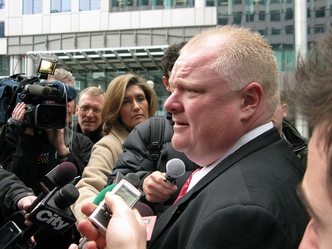 "Mayor Rob Ford Outdoors at David Pecaut Square, Toronto" by West Annex News
A Writing Tip from "Cut the Waist"
For once my tip comes from someone else. Apparently Councilor Doug Ford, the Mayor's brother, proposed the name "Cut the Waist".
If you hadn't followed the last Toronto municipal election, Rob Ford had campaigned to "stop the gravy train" at City Hall, and thus to cut wasteful spending.
Therefore the "Cut the Waist" diet challenge was a terrific pun on the politics, and very appropriate to the actual issue of losing weight.
From a diet and fitness viewpoint, as well as for the pun, the Ford brothers did miss the chance to actually measure their waistlines as well as their weights. Doing so would have completely and utterly sewn up the pun.
My writing tip is to get the most mileage possible from your clever wordplay. You do not have to use puns; but if you do, then be sure to make the most of them. If you're writing about car maintenance, you might mention shock absorbers and springs. If you then pun about doing this maintenance in the spring, then encourage people to spring into action. If you can add spring water to the mix, do that too.
That's the tip I would recommend to writers from the Toronto "Cut the Waist" challenge; dieters should read the other article for lessons found in Mayor Rob Ford's diet.
"Never start a speech with an apology", but this blog post starts with an apology to anyone who checked it from June 19 through most of July 4, 2012. After posting the preview, I was asked to split the original article into three pieces. It took me a bit of work to make sure they related properly to each other. Then it took a week to publish them all, so as to maximize their impact for the main site.
I made several images to explain Euclid's "parallel postulate" for an upcoming article in Decoded Science. To establish copyright, I always pre-publish my own images in a site that I control. It's also an excuse to publicize my articles.
DeHaan's Images for Euclidean Articles
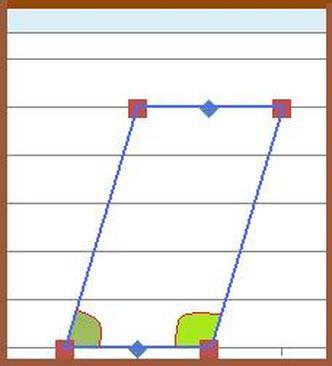 "A Parallelogram for Parallel Lines", image by Mike DeHaan First is a parallelogram, because it is too easy to just think "square".
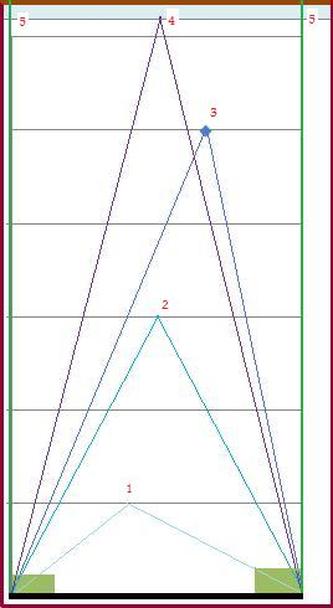 "Tall Triangles and Parallel Lines", image by Mike DeHaan Next we have triangles that grow taller until the top point splits, freeing the two green parallel lines.
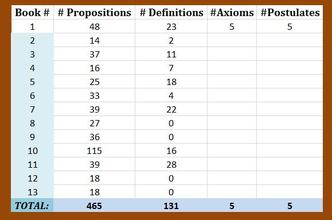 "The Numbers of Euclid's Elements", image by Mike DeHaan When I realized the article would become a trilogy, based on Euclid's whole multi-volume Elements, I decided that a spreadsheet would illustrate the size of the book.
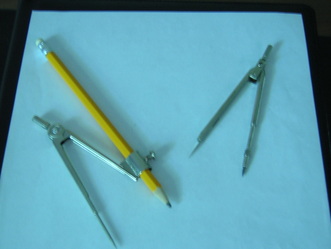 Later I realized I needed an image of a compass. Lo, a pair of my very own compasses!
What Are These Euclidean Articles?
Further Publicity for my Articles about Euclid's Axioms
Writing Tip based on my Euclid's Axioms Article
I think this is a new writing tip, although I probably hinted at it before.
Rather than drawing everything by freehand in my Paint program, I started with an Excel spreadsheet. Then I added a few data values, and inserted a "scatter" graph to provide the points for the first image.
I was completely dissatisfied with the first graph, because I was trying to get Excel to draw the lines automatically. Rather than spending time to work out those technical details, I decided to simply use the "scatter" graph as a background. Then I could Paint the rest.
I jumped from Excel to Paint for the second graph, since the multiple triangles would be even more of a nuisance.
As a bonus writing tip, remember that you could construct good graphics in other programs too. "Visio" comes to mind; its primary purpose is flow charts, but you might find it handy to help people visualize Euclid's axioms.
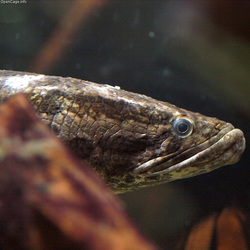 "Northern Snakehead Fish, or Channa argus" by OpenCage
More Publicity for the Northern Snakehead Fish
A Writing Tip based on Following the Fish
Some previous writing tips have noted that it can be worth planning a series of articles when you realize you have a big topic. Likewise, you could write articles from different viewpoints based on one topic.Today's writing tip is a bit different. You can also plan to write a follow-up article if you report on a rumour, the start of a project, or on the announcement of a plan or consultation.Later, you write about the resolution of that rumour, project or consultation. Since the original news was an unconfirmed sighting, I knew there would be some further news in the future. Therefore I searched for further reports, and jumped on the information when it became available.Previously, I've had similar situations where I simply updated the original article. For example, I've been updating "Weight Loss Risks for Toronto Mayor Rob Ford" in my DeHaan Fitness... blog, since he had announced a six-month "Cut the Waist" challenge. However, I also knew that there would be a new article once his time was up. That certainly worked for me in writing twice about the Northern Snakehead fish, and there may be more fish tales in the future.
My nearest and dearest annual charity running event is the 5Km Toronto Challenge. This year I had an excuse to write two articles on this one topic. " The Toronto Challenge for 5Km of Fitness" put the focus on fitness. The distance isn't extreme, and the organizers explicitly invite people to enter as walkers rather than as runners if they so choose. My DeHaan Fitness... site hosts this article. On the other hand, " A Novel Route for the 2012 Toronto Challenge" presents this as an annual Toronto event in the summer. That approach is right up DeHaan Services' alley. 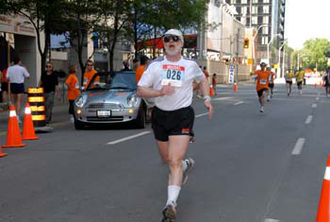 "Mike DeHaan in the final straightaway at the 2007 Toronto Challenge" Surely one of the least flattering pictures I could imagine, but I'm sure it is an accurate representation.
Publicizing these Toronto Challenge Articles
One Toronto Challenge Writing Tip
While this writing tip might be a rerun, it's not too recent to mention.
Unless your idea cup overflows, consider every new concept from different angles. Can you do one unit of research to generate several articles? Is there so much material that it deserves to be a series?
For example, my recent Decoded Science series on Turing machines reflected the fact that there is a lot to say about that concept. Yet the ideas need to be presented in a logical sequence, so they should be in a series at one site.
Conversely, the Toronto Challenge presented several different, but simple, angles. One article looks at fitness, especially at a novice level. The other highlights an event, with a special note for the new route. They easily fit into different blogs. As well, they link to each other, thus providing extra publicity.
So when you start your next article, take a moment to ask whether you're up for the "challenge" of creating several uniquely different stories from one basic idea, much as I did with the Toronto Challenge.
When I create an original image for someone else's online magazine, I post my image here first to establish copyright. Decoded Science published "It Would Take a Titanic Raft of Flotsam to Float Two Actors" on June 7th. It looks at the physics and math required to float a person on a raft made from one, or more, doors. 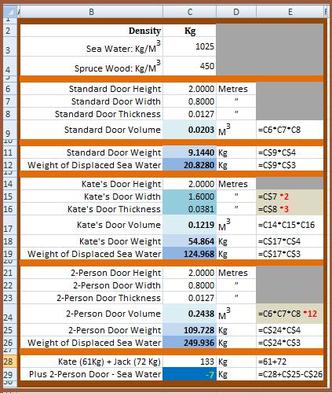 "Titanic Buoyancy Calculations" image by Mike DeHaan It is always difficult to show the math in a typical online article. Hopefully this will explain the text.
Promoting my Sinking Titanic Raft
A Writing Tip Gleaned from the Titanic Raft Article
Today's writing tip is drawn from how my editor improved my article.
Shortly after I began writing online, I learned that people really want to see images in articles. I also learned that the search engines also check the captions associated with the images. The caption should contain keywords.
Ideally, the image illustrates at least one keyword, so the caption will naturally include this.
However, this article includes a photo of a statue of Archimedes, whose "principle" relates mass, volume, displacement and buoyancy. These words are important to the article.
I had simply labelled the image with the names of the philosopher, the sculptor and the photographer. The editor changed the caption to "Archimedes understood volume and displacement". She brilliantly tied the caption to the article, included keywords and, rather saucily implied that perhaps the film's creators did not understand the physics.
So the writing tip is to put as much thought into your image captions as into your subheadings. Include keywords in a way that both readers and search engines will appreciate.
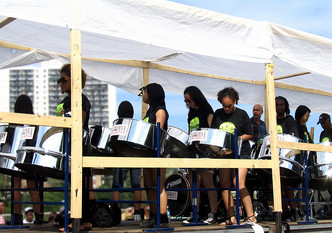 "Symphonix Steel Pan Drums at Caribana" by Loozrboy Steel pan drums are not the only type to be found in the performances at this drumming festival in Toronto.
My article includes some tips on getting there, and prominently features a link to the festival's own site.
Another Promotion for my 2012 Drumming Festival Article
A Writing Tip for the Drum Festival
This writing tip actually follows from a comment in Reddit, directed to another recent article about a Toronto event.
The comment said, in effect, that in Reddit one should post the link to the event's own site, rather than a link to one's blog article.
Fair enough. I actually risk the wrath of Google by putting a link to the organizer's site at the start of my article. That may lead people to click away instantly, giving me a high "bounce rate" and a lower rank in Google.
On the other hand, I don't get paid to publicize these events, and I'm not an insider. Unless there is truly a public good to be gained, there's little reason for me to do something so simple.
On yet another hand, my article might be helpful in highlighting some salient details that are otherwise buried in the main site, or missing altogether. One example of my added value is my advice on TTC routes for those heading to the Toronto Muhtadi International Drumming Festival. That was above and beyond what the drum festival noted.
So the writing tip is to be sure you are adding extra value beyond what was readily available from your sources. Some magazine sites want exclusive interview quotes; my own tactic is to bring in something extra from other sources.
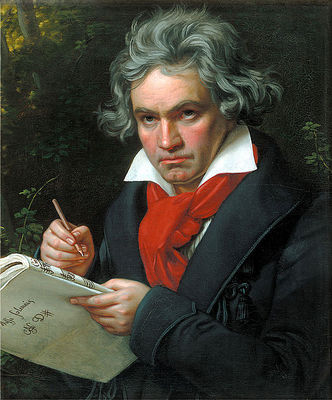 "Ludwig van Beethoven" via Wikimedia Commons The Festival Luminato is an annual arts wingding in Toronto that lasts two weeks. Rather than documenting all the events across two dozen venues, I decided to focus on two pairs. Hence the "double double" in the title, which is a sly pun on coffee with two creams and two sugars. As always, I also promote my article in my Xanga blog (" 6 Picks for Toronto's Festival Luminato 2012" ), where I also explain how a double-double becomes "6 picks".
One Writing Tip based on Luminato
One of the first "Toronto Event" articles I wrote in my DeHaan Services blog also had a large number of venues and performances. I tried to thoroughly list, and comment on, each one.
Today's writing tip is to be more selective, especially when writing about a "festival" that includes many "events".
Focus your article on a limited number of items. Include a link to the main site, so your readers can dig up more details. Your job is to invite people to consider enrolling in the school, not to teach the whole curriculum.
Anyway, that has become my approach to writing about Toronto events such as Toronto's Festival Luminato for 2012.
Whenever I publish an original image in another person's web site, I first put a preview image here, to establish copyright.
This picture of incomprehensible math is part of an upcoming article for Decoded Science.
 Levy Distribution using Fourier Transform image by Mike DeHaan The article is " T Cells, Predators and Finances all Walk the Levy Walk". I was amazed to learn that those three very different entities are related by the statistical Lévy distribution. Fortunately, my article makes it a lot clearer than you might expect from this publicity blog.
Publicity for my Lévy Walk Article As always, I also promote my article in my Xanga blog (" 3 Strangers Who Walk the Levy Walk"). Normally, I also use my in DeHaan Services site, but that's been delayed with posts about festivals in Toronto in June 2012. More accurately, four start on the June 9-10 weekend. My "events" articles are: However, on June 5th, I finally added " A Trio Take the Levy Walk" to DeHaan Services. 2 Writing Tips from my Lévy Walk Article I don't like to spill that bean before the article goes live, but the second writing tip actually has to do with the above image.
The first writing tip is for Weebly, based on a problem. I just had a terrible time trying to copy and paste from one "Title" element to another. My guess is that it copied the HTML tags for starting and ending the title. The solution was to copy and paste into a Notepad.txt file, and then cut and paste the plain text. All that work was needed to copy a simple acute accent over an 'é'!
The second writing tip solves a problem I encountered when making the image. Note the letter 'β' ("beta"), the second-last letter in the equation. It is an exponent of "-N|k|", which itself is an exponent. So the 'β' is supposed to be higher up than "N|k|", which is higher than the 'e'.
It's easy to put the letters and symbols into a Word document, and to create one layer of superscripts for the exponent. But I could not think how to get the 'β' any higher.
As always, I took a screenprint of what I had, pasted it into a Paint document, and cropped most of the image away.
To my surprise, the Paint program allowed me to pull the 'β' element up after I put the "select" tool over it! That solved my problem, and gave me the longest writing tip to date in my Blog of Writing.
|














 RSS Feed
RSS Feed